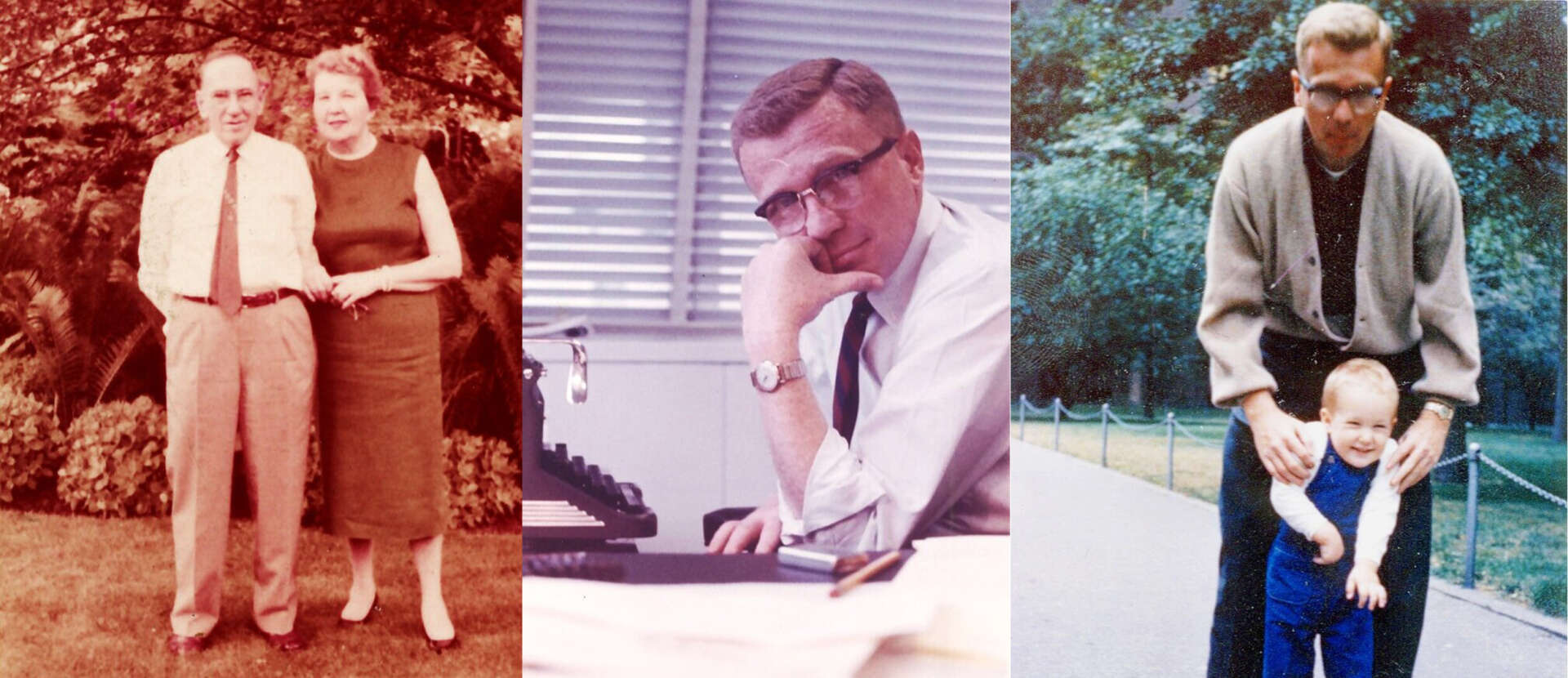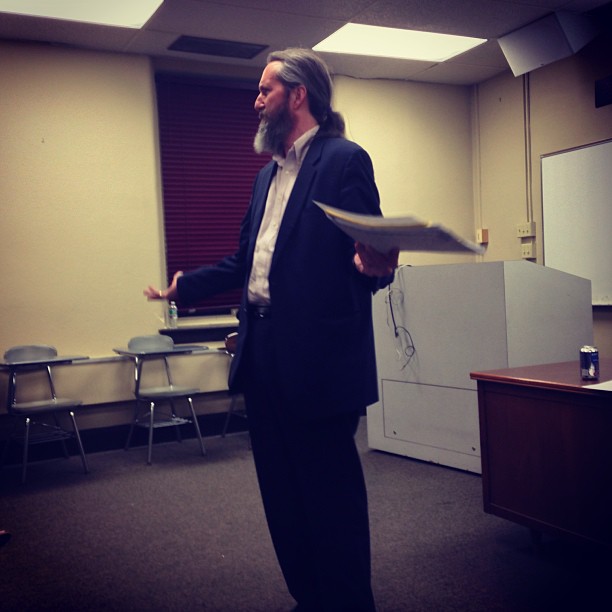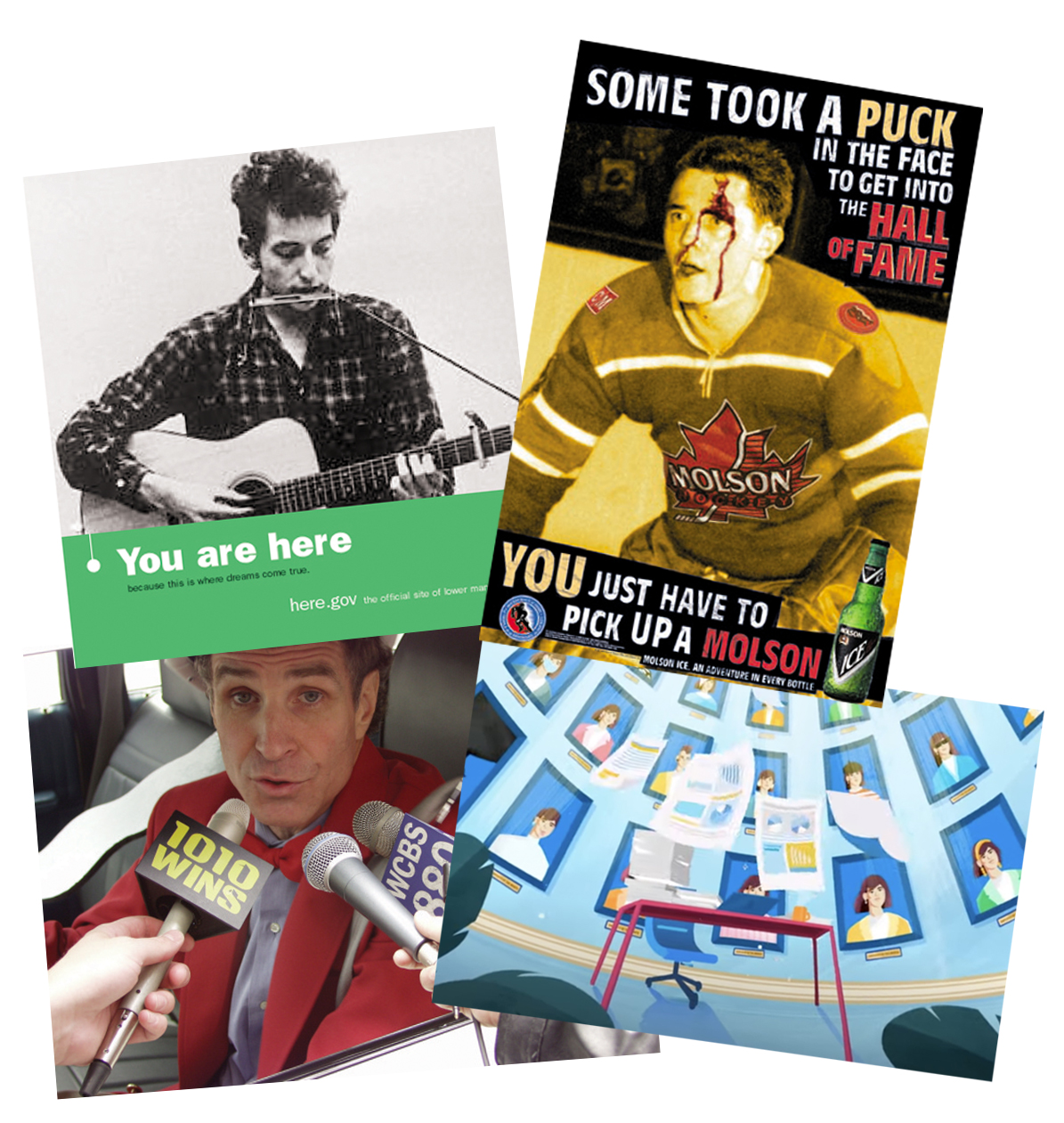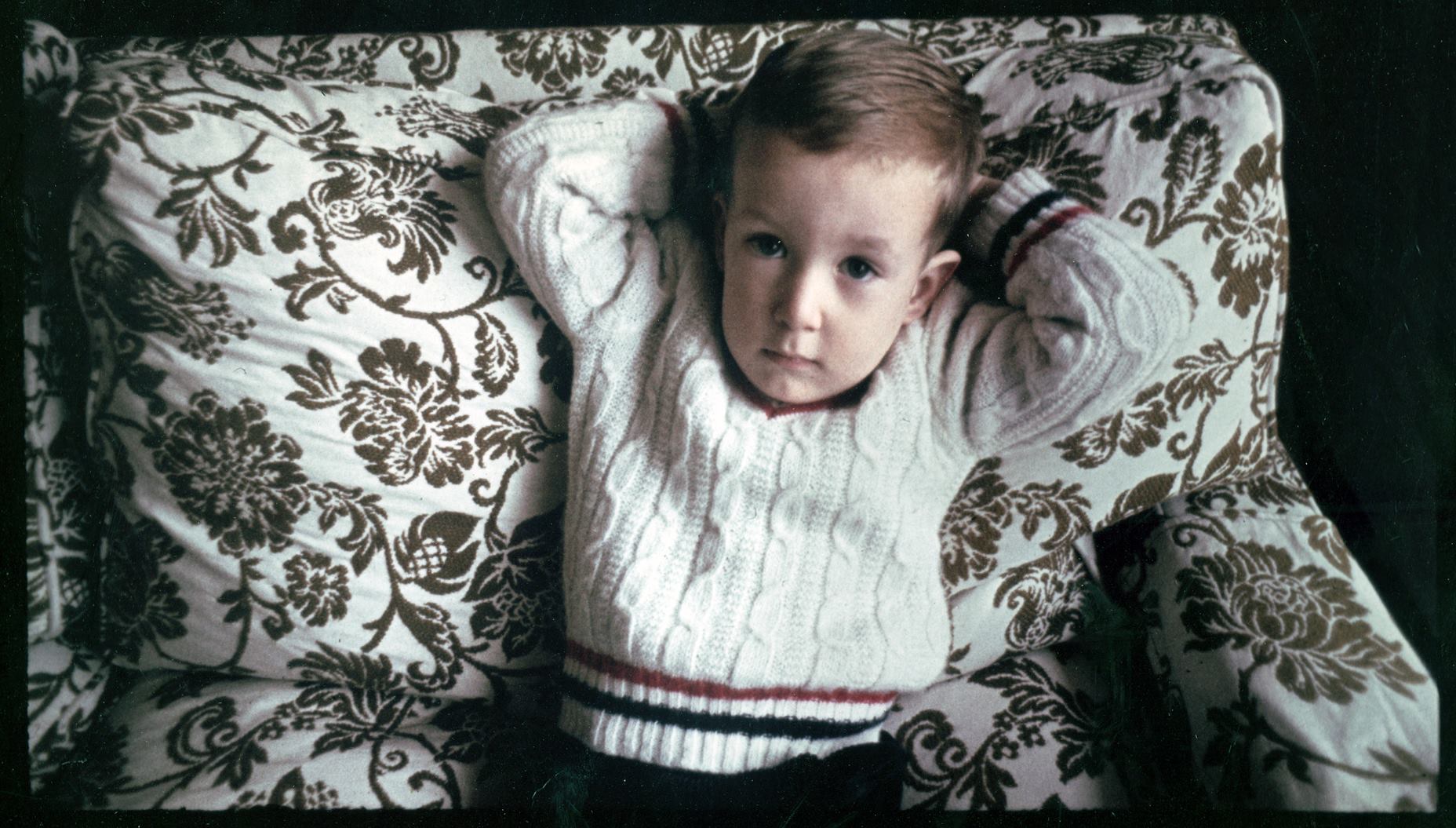We’re excited to introduce you to the always interesting and insightful Martin Bihl. We hope you’ll enjoy our conversation with Martin below.
Hi Martin, thanks for joining us today. Learning the craft is often a unique journey from every creative – we’d love to hear about your journey and if knowing what you know now, you would have done anything differently to speed up the learning process.
My pleasure. So, I write advertising. And I am certain that there are many reading this who find the word “craft” being associated with “advertising” an absurdity. And further, that there are people within advertising who think that talking about “writing” in the context of advertising at all is the height of ridiculousness, let alone the alleged “craft” of such a dinosaur method of communication.
And yet, here we are.
I think you can really only learn the craft of advertising by making ads. Whether we’re talking about social posts or print or tv spots or guerilla stunts or whatever. You have to do them and fail and then figure out why what you did failed, and do it again, and, as Beckett says, fail better. It’s not a very efficient process, I grant you, but it’s the only one that makes sense to me.
Because what you’re really trying to learn is how to be believable to people who don’t care what you’re talking to them about. Sure, you’re learning about writing and designing and coding and research and strategy and all that other stuff. But really, those “tactics” (for want of a better term) are all in service of figuring out how to talk to people who don’t want to talk to you because they’re doing something else – in a way that makes them stop doing what they’re doing and engage with you.
And that’s a really tricky thing to do, so you kind of just have to keep doing it until you begin to understand it. But wait, there’s more.
Because those people you’re trying to talk to? They’re changing. I don’t mean just that they’re changing with each campaign and client – today you’re talking to senior citizens, tomorrow you’re talking to Mets fans, the day after that you’re talking to hungry teens, whatever – although, yes, that. But those people themselves are changing. They get married, they lose their job, they discover they like anchovies, they resolve their issues with their parents, they develop issues with their parents. I don’t know. The point is, they’re not static – though we love to think of them that way. If nothing else, they’re changing by getting tired of your ad, so you have to think of something new. But of course, there always is something else – like, for example, what your competitor is doing because of what you were doing.
So in addition to just making ads over and over again, you have to look at what others are doing – to see what’s possible but also so you understand the context for your customer. How is the competition getting people to stop what they’re doing and is it working? No? That’s fine too. Because looking at bad ads, and figuring out why they are bad, is also really valuable. Did they speak a language the customer wouldn’t understand? Did they try to say too much and it overwhelmed the customer? Did they assume too much about the customer – or assume the wrong things? Doing this helps you develop a talent for being able to look at ads they way your customers do while at the same time thinking about them as creatives do, and this sort of “double vision” is as valuable to your success as it is rare.
Oh and writing. Almost forgot that.
It’s like Professor Tripp says in Curtis Hansen’s movie of the Michael Chabon novel Wonder Boys – “You tell the ones who have found their voice to keep writing. You tell the ones who haven’t found their voice to keep writing.” Or as a friend of mine who used to work in the NBA said that the players told him – “You shoot when you’re hot and you shoot to get hot.” In other words, you just have to keep doing it.
So that’s what I did. More or less. Plus I grew up in the business (my father and grandfather were both in advertising). And I read a lot. And watched a lot of movies. That helped. I think.
Awesome – so before we get into the rest of our questions, can you briefly introduce yourself to our readers.
I am Executive Creative Director at LevLane, an award-winning advertising agency in Philadelphia, Pennyslvania. What does “Executive Creative Director” mean? It means I oversee the creative, the concepts and much of the strategy for our clients which range from companies in the automotive industry to the banking industry to the healthcare industry to the insurance industry and on and on. On any given day I may be presenting new business, writing some creative, providing direction on a campaign, untangling a problem with a vendor, collaborating with media or dev or content or someone else to figure out how to do something that’s never been done before, or discussing with finance how much this is all costing and why. Or said another way, I’m in a lot of meetings.
At the same time, I run something called the-agency-review.com. It’s a site of reviews of books relevant to advertising – and since I believe that advertising is where culture and commerce collide – that pretty much covers everything. The site has reviewed over 200 books, and has interviews with such icons as George Lois, Sir John Hegarty, Luke Sullivan and others.
That said, my writing is not limited to the-agency-review. This year I’ve been fortunate to publish some pieces on Cannabis and AI, but in the past I’ve written extensively about soccer and the spirits industry, and some of my work has appeared in publications like New York and McSweeneys as well.
When not doing those things, I teach advertising and marketing at the undergrad and graduate level. Or I sleep. But not enough. Sleeping, I mean.
Do you think there is something that non-creatives might struggle to understand about your journey as a creative? Maybe you can shed some light?
In this digital-crypto-AI-zoomcall world, I’m no longer certain that anyone benefits from anything they don’t actually experience themselves. But regardless of that, I’ve begun to believe that the thing that most non-creatives don’t get about creativity is that in a sense, nothing is wasted.
To be clear, I don’t mean that everything we create is perfect and brilliant (although some of us, sure…). I mean two very specific things, one for process and one for execution, as it were.
Let’s start with process. Okay, so real creatives go down a lot of dead ends. They write a lot of stuff for a project that the project never uses. They put a lot of paint on the canvas and then they scrape it off again or paint over it (I dunno; I’m a writer, not a painter). And I know, that sounds like “wasting”, right? Like literally “wasting time”. But it’s not. Here’s why.
Every time you go down a dead end, every time you write something that doesn’t work, or design something that’s awful, a real creative gets two very important things out of it. First, and perhaps most obviously is, “well, THAT didn’t work” – which is useful because there are often an almost infinite number of options available when creating something, so finding something that DOESN’T work helps you figure out what DOES. Or at least helps a little. Like when you come to a fork in the road and you go right and it’s a dead end – you think “well, I guess I should go left, even though I don’t know where that goes yet either”. So you learn that, you learn what not to do.
But you also learn what’s down that dead end. And just because it’s a dead end for THIS project, doesn’t mean it’s a dead end for something else. And I have found that, generally speaking, creatives have this amazing ability to remember old dead ends and turn them into really amazing stuff. And to be clear, I’m not talking about just recycling the same old idea over and over again. I mean using the dead end as sort of “research”, learning stuff that ultimately wasn’t applicable here, but that MAY be applicable somewhere else (anyone who watched the BBC show “Connections” in the 1970s knows what I’m talking about. Anyone who HASN’T seen it, go here NOW). So you learn that.
And that’s the “process” part of “nothing is wasted”. Now, the execution part.
In really good art – or any creative – everything is there for a reason. Whether we’re talking about a novel or a painting or a song or a dance – everything you see was a choice, a decision. In fact, many times, what you see is the result of several decisions. But none of it just “showed up”. Why? Because the artist (or if you prefer, “creator”) has limited space, whether that space is a page or a canvas or a stage, or that most important space – the attention span of the audience. Thus she can’t afford to waste any of it with something that isn’t contributing to the whole, that isn’t helping to deliver the message, the idea, the concept, the meaning. Thus, executionally, nothing is wasted.
Now, what about “accidents” in art that happen in the spur of the moment? What about the “action painting” of Jackson Pollock or someone like John Cage bringing the randomness of the I Ching into his compositions? Not a problem. The artist is still evaluating those things based on the limited space she has – that’s how she can incorporate “inspiration” or “epiphany” into a work – by evaluating its relevance. Because nothing is wasted, because nothing can be.
Now of course, this all makes creativity sound very scientific and logical and organized, and if you’ve ever spoken to a creative about their work, often you’ll just get an answer like “um, well, I dunno, I just thought it made sense to do that”. But that really just means that some creatives intuitively understand the reasons better than others, or that some are better able to articulate the reasons than others. Or said another way, they know they have limited space – whether that space is physical or cognitive, remember – and they’re intuitively making decisions based on that understanding. It’s all internalized.
And of course, sometimes the reasons can be bad reasons. But in a sense, that doesn’t matter for our discussion. Because the principal guiding the reasons is still the same – I do not have the luxury of wasting anything in this poem, song, whatever.
Do I think the same is true in the dark corner of creativity I inhabit? You betcha.
Which is why when clients say things like, “can we add a puppy?” art directors lose their shit. Because any art director who is any good has built the piece so that everything is contributing to the message – like a jenga tower – and pulling one piece out can make the whole thing topple over. “Add a puppy”? Well why? How does the puppy contribute to the message, concept, meaning? How does it use the space better than what I have there?
Oh and there’s one more bonus value to all of this “nothing is wasted” thinking. It has been my experience that people who call themselves creative but are not really creative don’t understand this any more than self-proclaimed “non-creative” people do. That is to say, they are as frustrated by what they see as “wasting time” as anyone else. Why is that nice? Because it becomes a simple sort of litmus test for determining whether you have someone who knows what they’re doing, or someone who’s just a lazy, posing, jerk.
Because, yeah, as someone who has spent most of his life in this business, I concede that it’s hard to tell the difference most of the time.

Are there any books, videos, essays or other resources that have significantly impacted your management and entrepreneurial thinking and philosophy?
Okay this is going to sound like shameless self-promotion – and I would be lying if I didn’t cop to at least an element of that, to be sure – but running the-agency-review.com has had an enormous impact on how I think about pretty much everything I do. Of course, reviewing all these books about advertising and culture has informed – and on occasion, altered – much of what I think about the business I am in and business in general. But that’s probably obvious and didn’t need stating (oh well, too late now).
What is less obvious – or at least was too me – is how it affected the way I think about running a business and even branding in a way that I completely did not see coming. And it happened fairly early on. Unfortunately, like most things in this interview, it takes a little bit of set up.
You have to understand that the-agency-review.com came about because I had been editing the book review section of Advertising Age. When that gig abruptly ended, I was still on the mailing lists of all the major publishing houses – which means literally hundreds of books kept coming to my door. I figured I could either email everyone and tell them that I was no longer running Ad Age’s book review section, or I could start my own thing and see how that went. So I started the-agency-review.com and began reviewing books about advertising on my own.
At the end of that first year I did a special edition post in which I asked high profile folks in the ad industry what they’d been reading that they wanted to turn other people on to. To my surprise, they suggested books of poetry and art books and novels. I know, big shock – people in advertising did not read advertising books alone. Okay – but the problem was that the site WAS about advertising books alone. So now what? Did this new information give me permission to review books that were NOT advertising books, because my audience was advertising people and they would accept them? Or would I dilute my “brand” (such as it was or is) if I started reviewing books on music and history and biography? And how legitimate was this new information at all? Was what I was seeing indications of a more robust “brand” than I thought I had, or was it merely a blip and I should stay the course?
What was fascinating to me about all of this was that, in a sense, these questions that were throwing me for a loop were ones that I had answered easily when I argued with CMOs about THEIR brands. Brands which, of course, represented significantly more revenue than my little book review site. That insight into what my clients were going through, that insight into the real-world challenges of branding and running a brand – THAT really impacted my thinking.
Contact Info:
- Website: https://www.martinbihl.com/
- Instagram: instagram.com/martinbihl
- Linkedin: https://www.linkedin.com/in/martinbihl/
- Twitter: https://twitter.com/martinbihl
- Other: https://the-agency-review.com/


